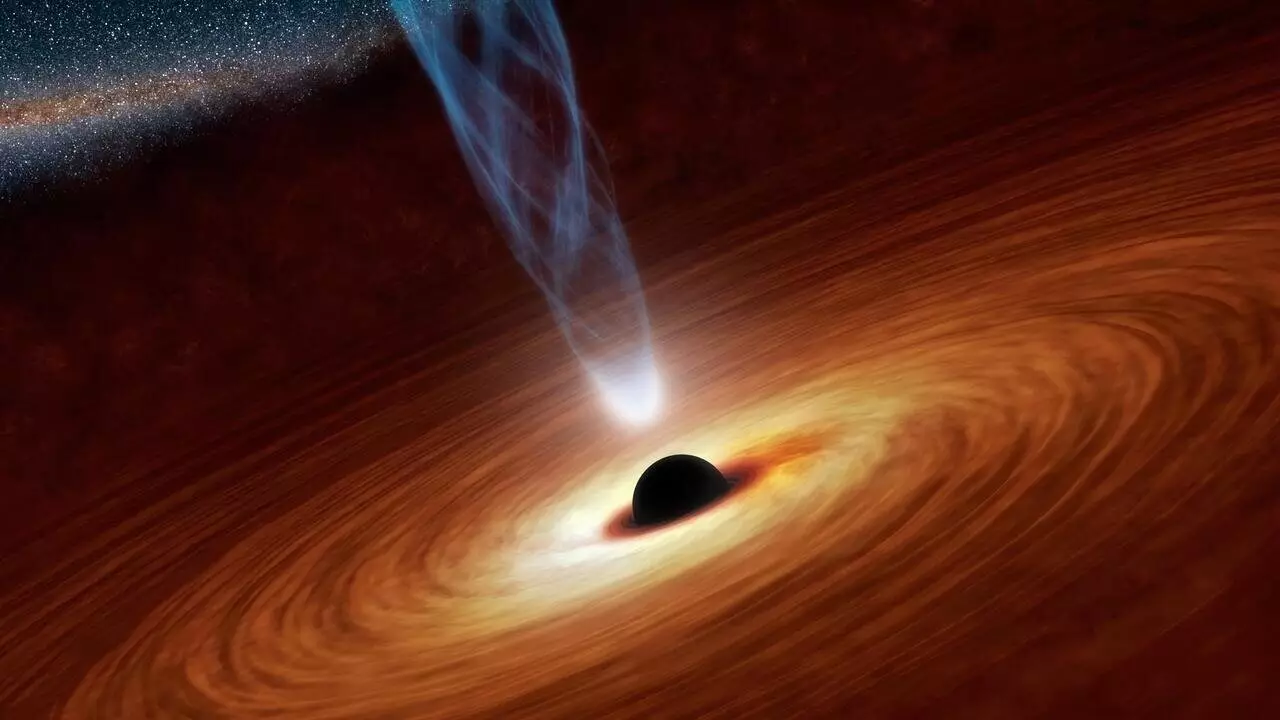For the past seventy years, scientists have been captivated by the idea of “kugelblitze,” black holes spawned by intense concentrations of light. These unique cosmic phenomena were thought to potentially unravel the mystery surrounding dark matter and even serve as the driving force for futuristic spacecraft engines. However, recent theoretical physics research conducted by a team from the University of Waterloo and Universidad Complutense de Madrid has shattered these theories. In their paper titled “No black holes from light,” published on the arXiv preprint server and soon to be featured in Physical Review Letters, the researchers conclusively prove that kugelblitze are unattainable in our present universe.
Eduardo Martín-Martínez, an applied mathematics and mathematical physics professor affiliated with the Perimeter Institute for Theoretical Physics, explained, “The conventional black holes that we are familiar with are formed by massive concentrations of ordinary matter collapsing due to gravity. The hypothesis of light-induced black holes stems from the idea that energy, including light, can curve space-time according to Einstein’s theory of general relativity. However, our analysis took quantum effects into consideration.” The research team constructed a mathematical model that factored in these quantum effects, revealing that the intensity of light necessary to generate kugelblitze would be orders of magnitude higher than that observed in quasars, the brightest entities in our universe.
José Polo-Gómez, a Ph.D. candidate specializing in applied mathematics and quantum information, elaborated on the findings, stating, “Before reaching the critical threshold of light intensity required for kugelblitze formation, quantum phenomena would intervene. The concentration of light would trigger the spontaneous creation of particles such as electron-positron pairs, which would swiftly disperse.” While replicating such extreme conditions on Earth with existing technology is unfeasible, the researchers are confident in the validity of their conclusions, drawing parallels with the principles underpinning positron emission tomography (PET) scans.
Martín-Martínez further elucidated, “Our results are rooted in the concept of ‘vacuum polarization’ and the Schwinger effect. A simplistic analogy would be the annihilation of matter and antimatter in PET scans. Electrons and their antiparticles, positrons, can mutually annihilate, producing pairs of photons or light particles. Essentially, the phenomenon we have identified acts as a counterforce to the creation of black holes from light, akin to the matter-antimatter annihilation in PET scans. When light is intensely concentrated, it gives rise to electron-positron pairs that disperse rapidly, carrying away the energy and thwarting gravitational collapse.”
While the unattainability of kugelblitze may disappoint astrophysicists, it represents a significant advancement in fundamental physics research facilitated by collaborative efforts between applied mathematics, the Perimeter Institute, and the Institute for Quantum Computing in Waterloo. Polo-Gómez expressed, “Although these revelations may not yield immediate practical applications, we are paving the way for technological breakthroughs for future generations.” This discovery underscores the boundless potential of interdisciplinary research in unraveling the mysteries of the universe.


Leave a Reply
You must be logged in to post a comment.